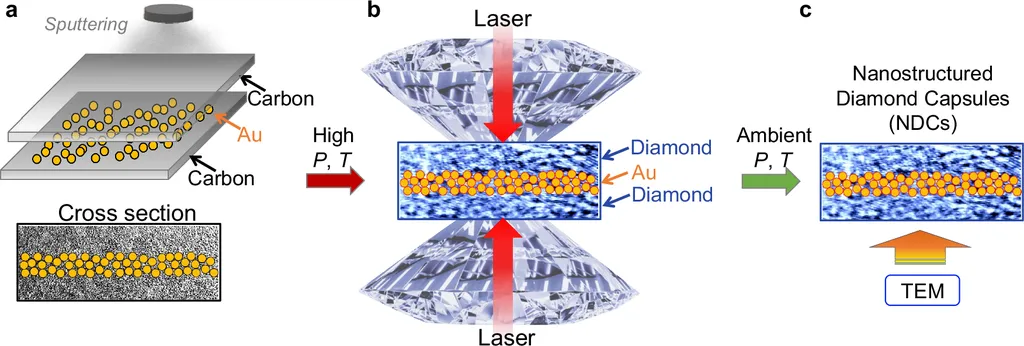Researchers from the Institute of Metal Research at the Chinese Academy of Sciences have published a study exploring the potential of nanotubes and nanospheres to preserve high-pressure materials at ambient conditions. The team, led by Dr. Yin L. Xu and Dr. Guang F. Yang, investigated the theoretical limits of these nanomaterials in maintaining the unique properties of matter under high pressure, which are typically lost when the pressure is released.
The study, published in the journal Nature Communications, proposes a new physical model to evaluate the pressure-bearing capability of nano-cavities. The researchers incorporated first-principles calculations to screen and select four types of representative nanomaterials: graphene, hexagonal boron nitride (h-BN), biphenylene, and γ-graphyne. They then performed systematic investigations to determine which nanomaterials could best preserve high-pressure materials.
The results indicated that graphene nanotubes and nanospheres exhibited the best pressure-bearing capability, followed by h-BN, biphenylene, and γ-graphyne. The model revealed that the structure with the largest average binding energy per bond and the highest density of bonds would have the highest absolute limit to contain pressurized materials. Electron/hole doping and interlayer interactions were found to have minor effects on this capability.
The findings suggest practical applications for the energy sector, particularly in the development of superconductors and the storage of high-pressure materials. For instance, a single-layer graphene sphere could retrieve compressed LaH10 with a volume size of 26 nm3, corresponding to a pressure of 170 GPa and a near-room-temperature superconductor transition of Tc=250 K. Similarly, three layers of a nanosphere could contain a volume size of 173 nm3 of metastable atomic hydrogen or molecular metallic hydrogen at about 250 GPa.
This research highlights the potential of nanostructure engineering in preserving the unique properties of high-pressure materials, which could lead to advancements in energy storage, superconductors, and other energy-related technologies. The study provides a theoretical framework for future research and development in this promising field.
Source: Nature Communications, “Appraising the absolute limits of nanotubes and nanospheres to preserve high-pressure materials”
This article is based on research available at arXiv.

